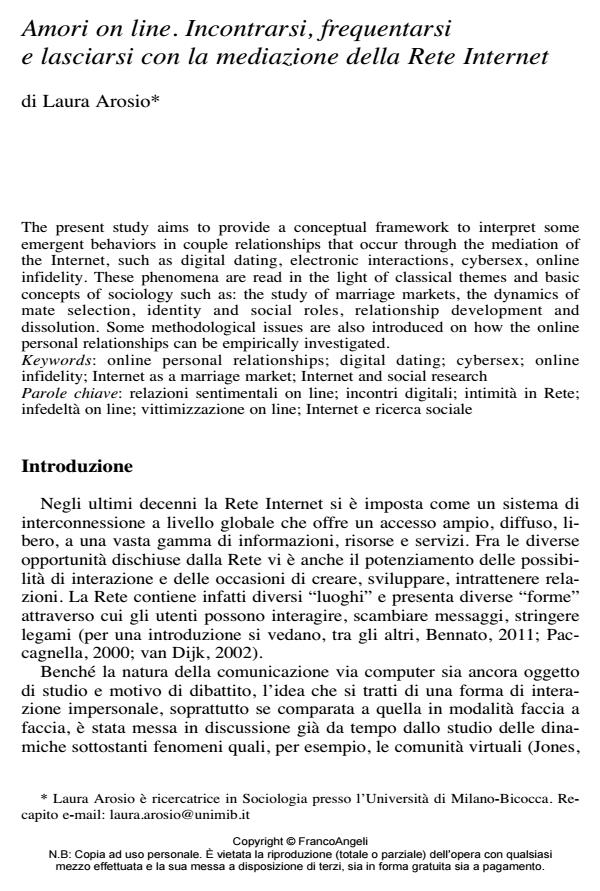Amori on line. Incontrarsi, frequentarsi e lasciarsi con la mediazione della Rete Internet
Titolo Rivista SALUTE E SOCIETÀ
Autori/Curatori Laura Arosio
Anno di pubblicazione 2013 Fascicolo 2013/2
Lingua Italiano Numero pagine 27 P. 77-103 Dimensione file 144 KB
DOI 10.3280/SES2013-002005
Il DOI è il codice a barre della proprietà intellettuale: per saperne di più
clicca qui
Qui sotto puoi vedere in anteprima la prima pagina di questo articolo.
Se questo articolo ti interessa, lo puoi acquistare (e scaricare in formato pdf) seguendo le facili indicazioni per acquistare il download credit. Acquista Download Credits per scaricare questo Articolo in formato PDF

FrancoAngeli è membro della Publishers International Linking Association, Inc (PILA)associazione indipendente e non profit per facilitare (attraverso i servizi tecnologici implementati da CrossRef.org) l’accesso degli studiosi ai contenuti digitali nelle pubblicazioni professionali e scientifiche
The present study aims to provide a conceptual framework to interpret some emergent behaviors in couple relationships that occur through the mediation of the Internet, such as digital dating, electronic interactions, cybersex, online infidelity. These phenomena are read in the light of classical themes and basic concepts of sociology such as: the study of marriage markets, the dynamics of mate selection, identity and social roles, relationship development and dissolution. Some methodological issues are also introduced on how the online personal relationships can be empirically investigated.
Parole chiave:Relazioni sentimentali on line; incontri digitali; intimità in Rete; infedeltà on line; vittimizzazione on line; Internet e ricerca sociale
Laura Arosio, Amori on line. Incontrarsi, frequentarsi e lasciarsi con la mediazione della Rete Internet in "SALUTE E SOCIETÀ" 2/2013, pp 77-103, DOI: 10.3280/SES2013-002005